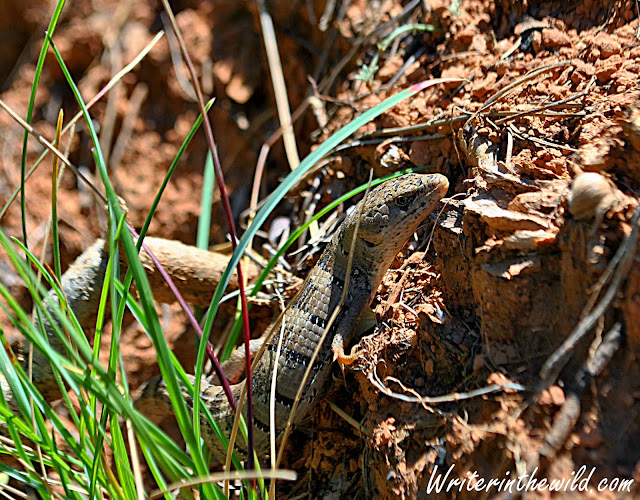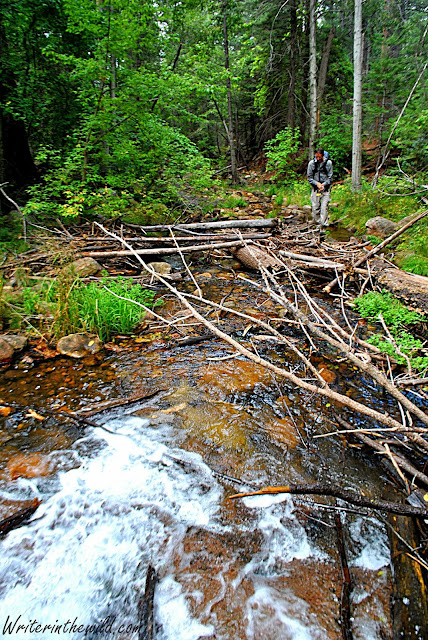Prescott National Forest is an area that I've never been too, so when I was invited for a hike up Granite Mountain in the Granite Mountain Wilderness, I jumped at the chance. Granite Mountain of course is the home of The Granite Mountain Hotshots, part of the Prescott Fire Department who tragically lost 19 members fighting the Yarnell Hill fire last summer.
A month before the Yarnell Hill fire, The Granite Mountain Hotshots fought a blaze closer to home. The Doce fire in Prescott National Forest burned 6,767 acres before it was contained, mostly in the Granite Mountain Wilderness. This hike would take us through the burn, and from the top of Granite Mountain give us a birds-eye view of the devastation.
 |
| Burnt signpost at Blair Pass |
This hike starts out in a classic juniper-pine woodland following a dry creek-bed from the trailhead near Granite Basin Lake. We followed the easy trail under the shadows of big Ponderosa Pines and huge Alligator Junipers. Peaceful, green and pretty, this area teemed with birds, squirrels, insects, and other wildlife. About a mile in signs of fire become visible on the hillsides, with burnt shrubs and melted prickly pear cactus. By the time we reached Blair Pass the terrain had become scorched and desolate. The ground plants were mostly gone, and the leafless black trees provided no relief from the hot sun.
 |
Eventually the trail wound around the northwest face of the mountain, revealing the charred remains of a large ponderosa pine grove. My hiking partner Dave mentioned that this area was previously lush and green, but now it just resembles a graveyard of towering black tombstones in a field of ash and dirt. In this area we had our only close encounter with some local wildlife, in the form of a Desert Tarantula. After my last encounter with a tarantula I read that they were very docile and easy to handle, so I decided to test the theory. I ran my pointer finger down its abdomen to pet it like I would one of my step-daughters rats. Well that's all it took to piss him off, and he immediately reared up its front legs and bared its fangs. So much for docile. He looked way too eager to sink his giant poisonous fangs into my hand if I handled him, so I figured the smart thing to do was just leave him alone.
 |
| Tarantula |
 |
| Dave looking out over the burn zone |
The top of Granite Mountain opens up into a large bowl-like depression surrounded by huge rock formations on all sides. In this depression stood the remains of another pine grove, but the fire damage here was not as bad, and the ground plants were well on the road to recovery. Eventually the trail brought us out to the south facing slope of the mountain. A little scrambling brought us as close to the summit as we dared, since the last 50 feet is a sheer wall of granite. I'm not too worried about peak-bagging, so I was content with how far we made it, and the beautiful view of Prescott and the surrounding mountains we had.
Looking out over the forest, I couldn't help but think about the firefighters who died, and those that still risk their lives to preserve what little remains of America's wild places. I read once that in the late 1800's, in the heyday of western settlement, some of those who would potentially gain monetarily from deforested land (ranchers, developers, etc), would often light forest fires on purpose. I cant help but think how ironic it is that we sacrifice so much now to preserve what was once taken for granted... How sad it is that we die to save what we once destroyed.
 |
| Me looking out over Granite Basin Lake and Prescott in the distance. |
















